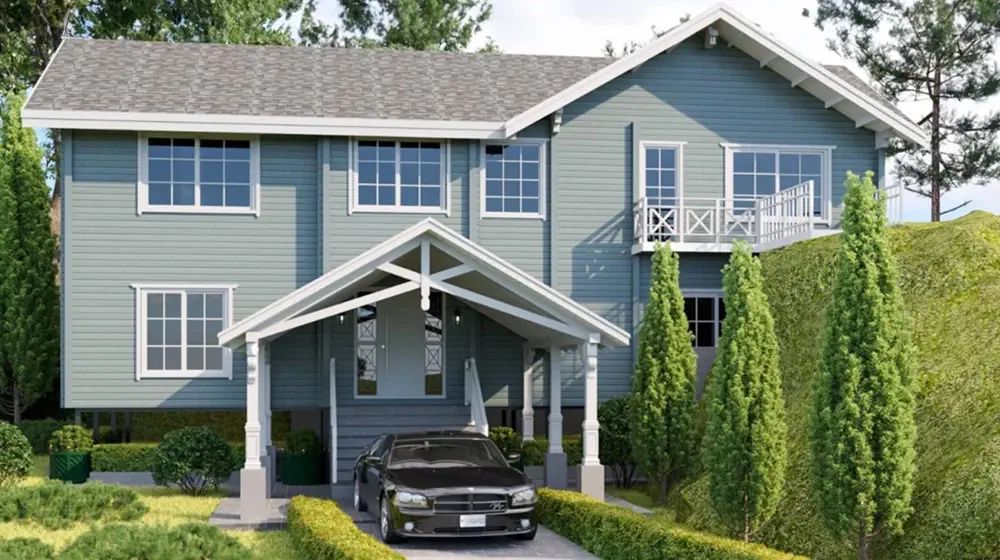From Log Cabins to Contemporary Wooden Homes: An Evolution
Wooden houses have a rich and varied history, evolving from simple log cabins to the sophisticated and stylish wooden homes we see today. This evolution reflects changes in technology, design aesthetics, and environmental consciousness. In this article, we will explore the journey of wooden houses, emphasizing their enduring appeal and the reasons behind their resurgence in modern architecture.
The Humble Beginnings: Log Cabins
The origins of wooden home can be traced back to log cabins, which were among the first types of shelters built by early settlers in North America and Europe. These structures were simple, utilitarian, and designed to provide basic protection from the elements. The primary material used was timber, which was abundant and readily available. Logs were notched and stacked to create walls, with gaps filled using mud or moss to insulate the structure.
Log cabins were practical and robust, reflecting the resourcefulness of their builders. They were often constructed without nails, relying instead on interlocking logs and gravity to maintain stability. Despite their simplicity, these early wooden houses laid the foundation for future innovations in wooden construction.
Advancements in Wooden House Construction
As societies evolved, so did the techniques and designs of wooden homes. The 19th and 20th centuries saw significant advancements in woodworking tools and techniques, leading to more refined and comfortable wooden homes. The advent of sawmills allowed for the production of uniform lumber, which improved the precision and efficiency of construction.
During this period, wooden houses began to feature more intricate designs, including porches, gabled roofs, and detailed trim work. The use of wood expanded beyond just the structural elements to include interior finishes, flooring, and decorative features. This era also saw the emergence of timber framing, a method that used large wooden beams and joints to create sturdy and spacious homes.
The Rise of Prefabricated Wooden Homes
The mid-20th century introduced the concept of prefabricated wooden homes, revolutionizing the construction industry. Prefabrication involves manufacturing sections of a house in a factory and then assembling them on-site. This method significantly reduces construction time and costs while maintaining high-quality standards.
Prefabricated wooden homes gained popularity due to their affordability and versatility. They offered a range of styles and sizes, from small cabins to large family houses. Additionally, the controlled environment of a factory allowed for better precision and reduced waste, making prefabricated homes an attractive option for both builders and buyers.
Contemporary Wooden Homes: Innovation and Sustainability
In recent years, wooden houses have experienced a renaissance, driven by a growing awareness of sustainability and environmental impact. Modern wooden home incorporate advanced building techniques and sustainable practices, making them eco-friendly and energy-efficient.
Sustainable Materials
One of the key features of contemporary wooden homes is the use of sustainable materials. Wood is a renewable resource, and when sourced from responsibly managed forests, it has a lower environmental footprint compared to other building materials like concrete and steel. Many modern wooden house manufacturers prioritize the use of certified sustainable timber, ensuring that their products are both beautiful and environmentally responsible.
Energy Efficiency
Modern wooden home are designed with energy efficiency in mind. Wood has natural insulating properties, which help maintain a comfortable indoor temperature and reduce the need for heating and cooling. Additionally, contemporary designs often incorporate features such as triple-glazed windows, high-efficiency HVAC systems, and passive solar heating to further enhance energy performance. This energy efficiency translates to lower utility bills and a reduced carbon footprint, making wooden homes an appealing choice for environmentally conscious homeowners.
Innovative Designs
Today’s wooden homes are not just functional; they are also aesthetically pleasing and innovative in design. Architects and designers are pushing the boundaries of what can be achieved with wood, creating structures that are both modern and timeless. From sleek, minimalist interiors to intricate, handcrafted details, contemporary wooden homes offer a wide range of styles to suit any taste.
One of the most exciting developments in modern wooden architecture is the use of cross-laminated timber (CLT). CLT is a highly durable and versatile material made by layering wood panels in alternating directions. This process creates strong, lightweight panels that can be used to construct large-scale buildings. CLT allows for greater design flexibility and has been used in various innovative projects, including multi-story residential buildings and commercial structures.
The Appeal of Dome Houses
In addition to traditional wooden houses, there has been a growing interest in dome houses. These unique structures offer several advantages, including energy efficiency, durability, and a distinctive aesthetic. Dome houses are typically constructed using a framework of interlocking triangles, which distributes weight evenly and provides excellent structural integrity.
Dome houses are also known for their energy efficiency. The shape of a dome minimizes surface area, reducing heat loss and improving thermal performance. This makes dome houses more comfortable and cost-effective to heat and cool. Furthermore, the open interior layout of a dome house allows for flexible and creative use of space.
Best Wooden House Manufacturers in India
India has seen a rise in the popularity of wooden houses, with several manufacturers leading the way in quality and innovation. Some of the best wooden house manufacturers in India include:
- Wood Barn India: Known for their eco-friendly and sustainable wooden homes, Wood Barn India offers a range of prefabricated wooden structures, including log cabins, chalets, and dome houses. Their use of high-quality timber from sustainable sources ensures durability and environmental responsibility.
Conclusion
The evolution of wooden houses from simple log cabins to contemporary marvels reflects the advancements in construction technology, design, and environmental consciousness. Modern wooden homes offer a perfect blend of sustainability, energy efficiency, and aesthetic appeal. Whether you’re drawn to the rustic charm of a log cabin or the sleek elegance of a contemporary wooden home, there’s no denying the timeless beauty and enduring appeal of wooden architecture.
May You Like :



